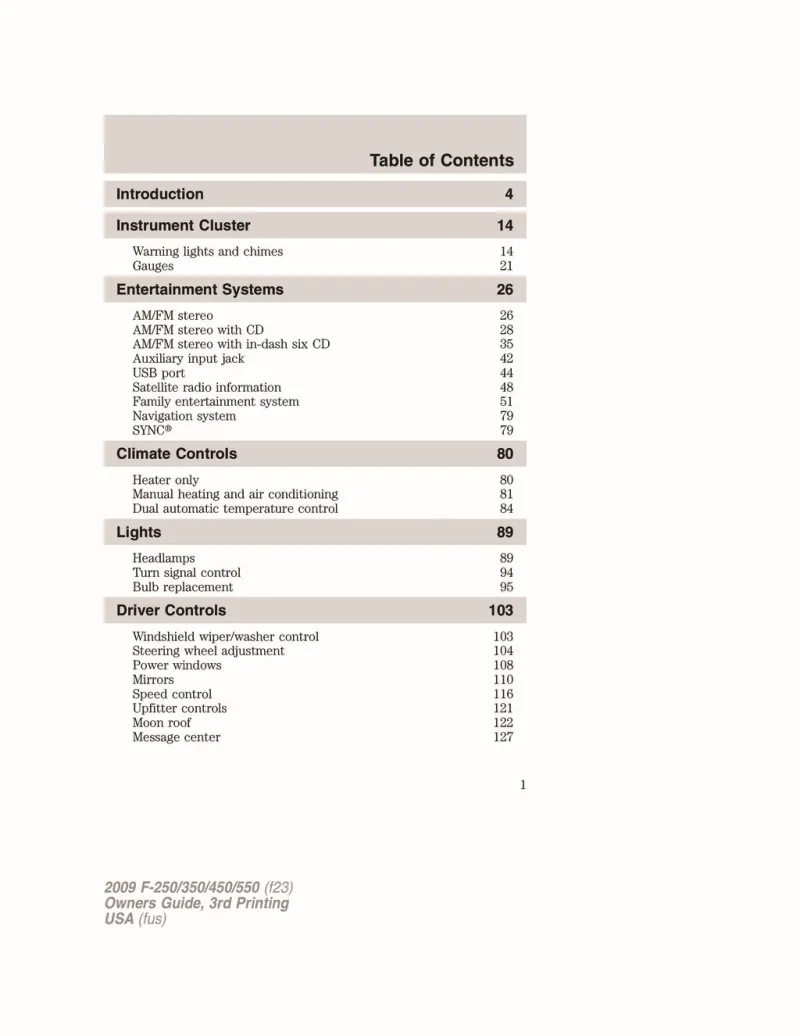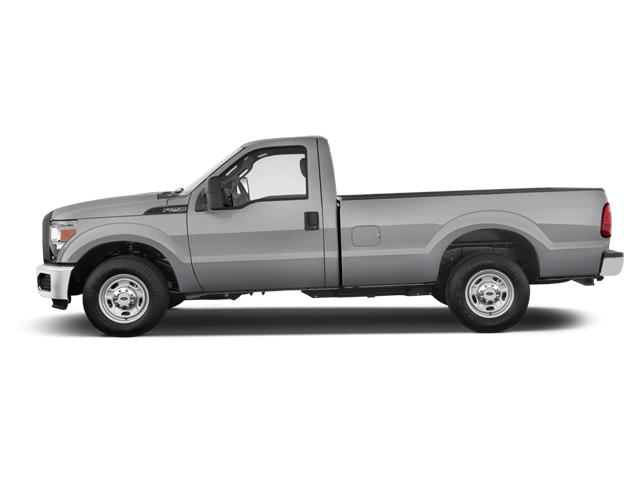2009 Ford F250 Owner's Manual

Table of Contents
2009 Ford F250 Overview
Introduction
The 2009 Ford F250 is a stalwart in the heavy-duty truck segment, offering an impressive blend of rugged capability, powerful performance, and modern amenities. As part of the Ford Super Duty lineup, this truck is designed to tackle the toughest jobs while providing comfort for everyday use. With a robust chassis and a lineup of powerful engine options, the F250 is a trusted choice for both work and leisure, appealing to a diverse range of truck enthusiasts.
Powertrains
The 2009 F250 features two formidable engine options tailored for performance and efficiency. The standard 5.4-liter V8 engine generates 300 horsepower and 360 lb-ft of torque, ensuring sufficient power for daily driving and light towing. For those seeking increased capability, the available 6.4-liter turbocharged V8 diesel engine delivers a hefty 350 horsepower and an astonishing 650 lb-ft of torque, perfect for heavy towing and hauling duties. Both engines are paired with a smooth-shifting five-speed automatic transmission, providing reliability and ease of handling.
Trims
This model comes in several trims to suit varying customer needs: the XL, XLT, and Lariat. The XL serves as a functional work truck with essential features, while the XLT adds a touch of comfort with upgraded interior materials and sound systems. The Lariat trim offers a more luxurious experience, including leather seating, advanced technology options, and an enhanced audio system, making it ideal for those who desire a blend of ruggedness and refinement.
Features
In terms of features, the 2009 F250 is equipped with a range of options to enhance both convenience and safety. Standard features include air conditioning, power windows and locks, and an optional navigation system. For increased safety, the F250 comes with advanced airbag systems and an anti-lock braking system, providing drivers with more confidence on the road.
Owner's Manual
The owner's manual for the 2009 Ford F250 serves as a comprehensive resource for drivers, detailing essential maintenance schedules, troubleshooting tips, and in-depth information about the truck's features and capabilities. It is an invaluable tool for maximizing the use and longevity of the vehicle, ensuring that owners can keep their F250 in optimal condition for years to come.
User manual download
The Ford F250 owner manual for the 2009 model year is to be found in PDF downloadable format on this page. The owner manual for the model year 2009 is free and in English, but the repair manuals are usually not easy to get and may cost more.
Manual Questions
Fill the form below and someone will help you!

